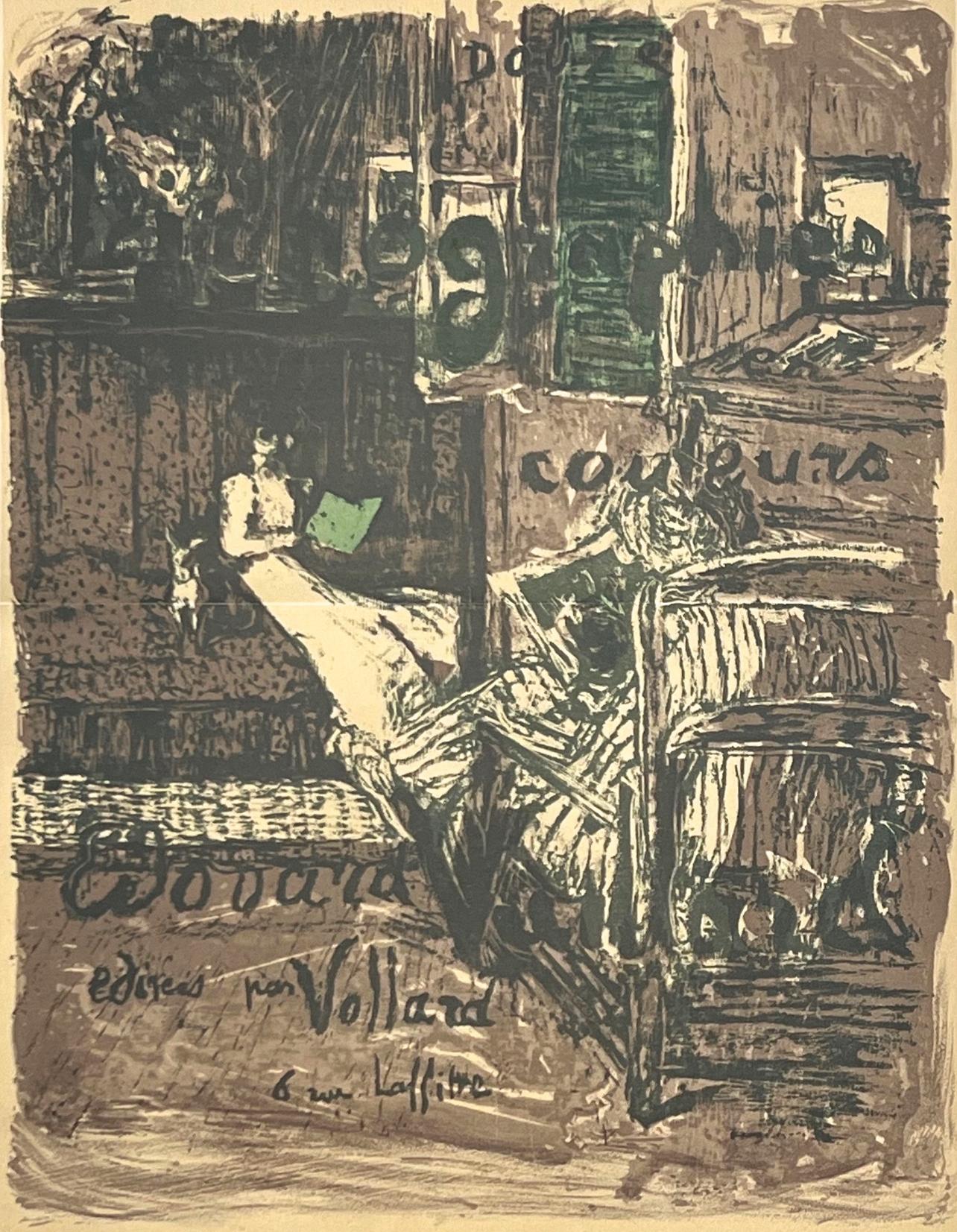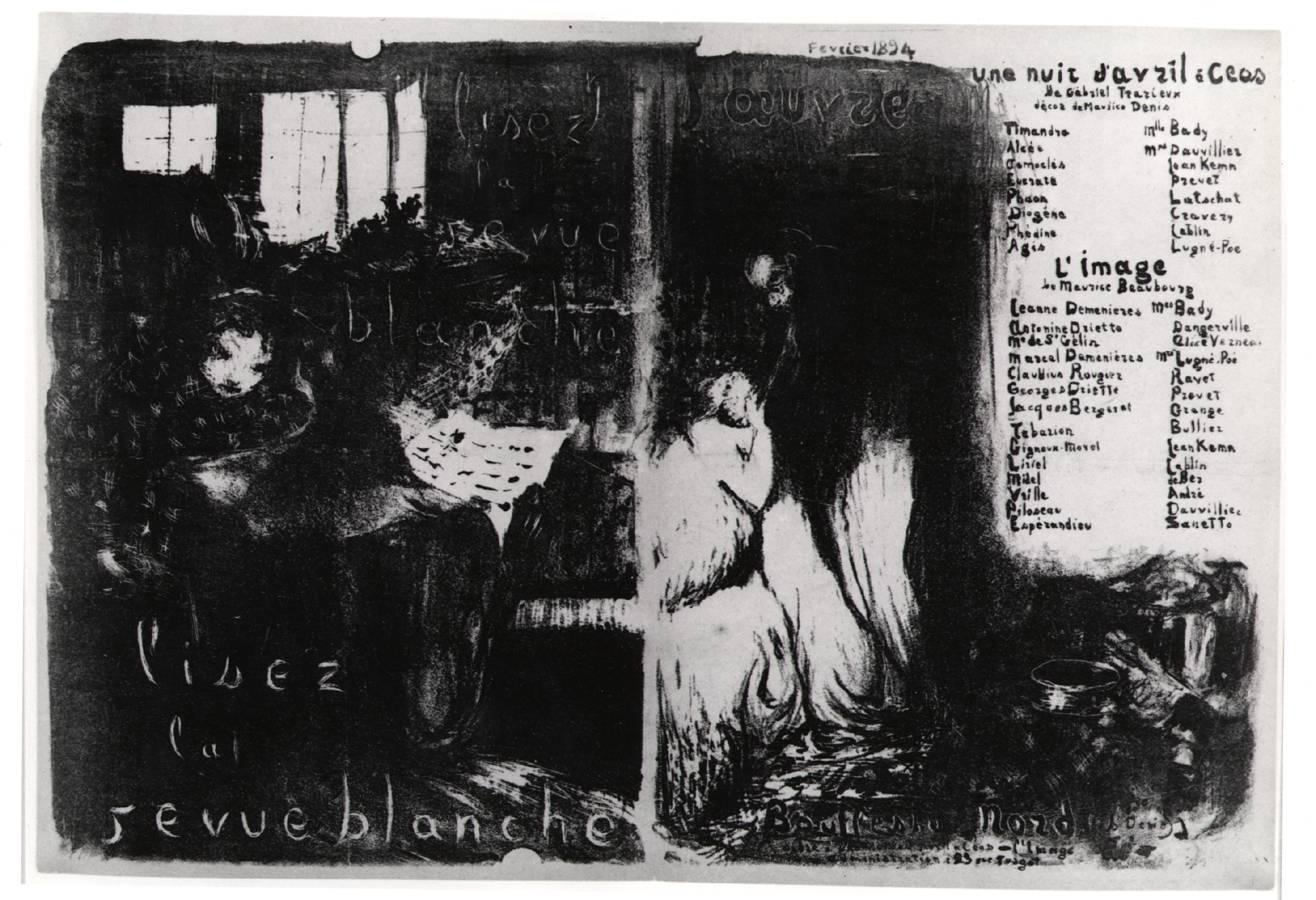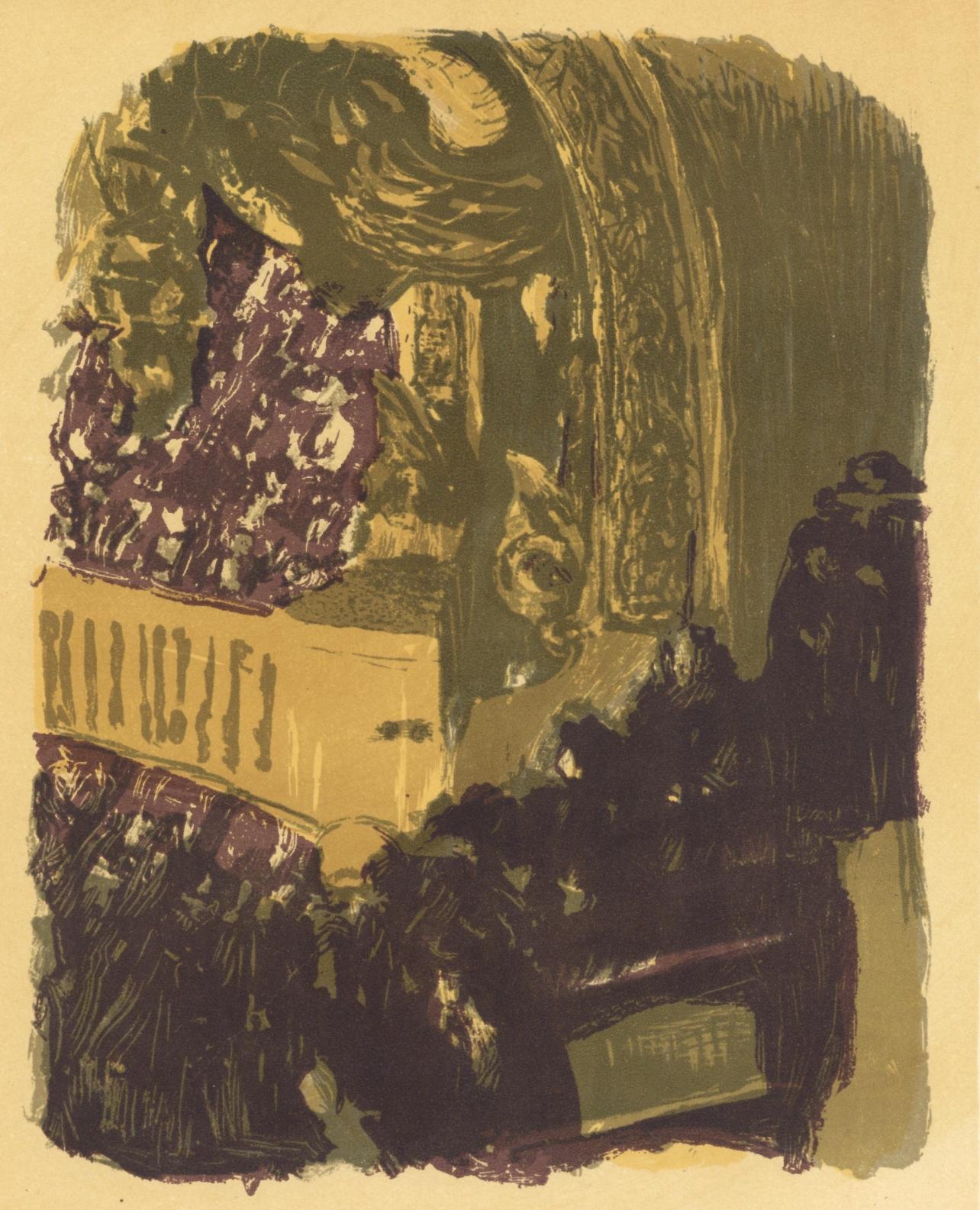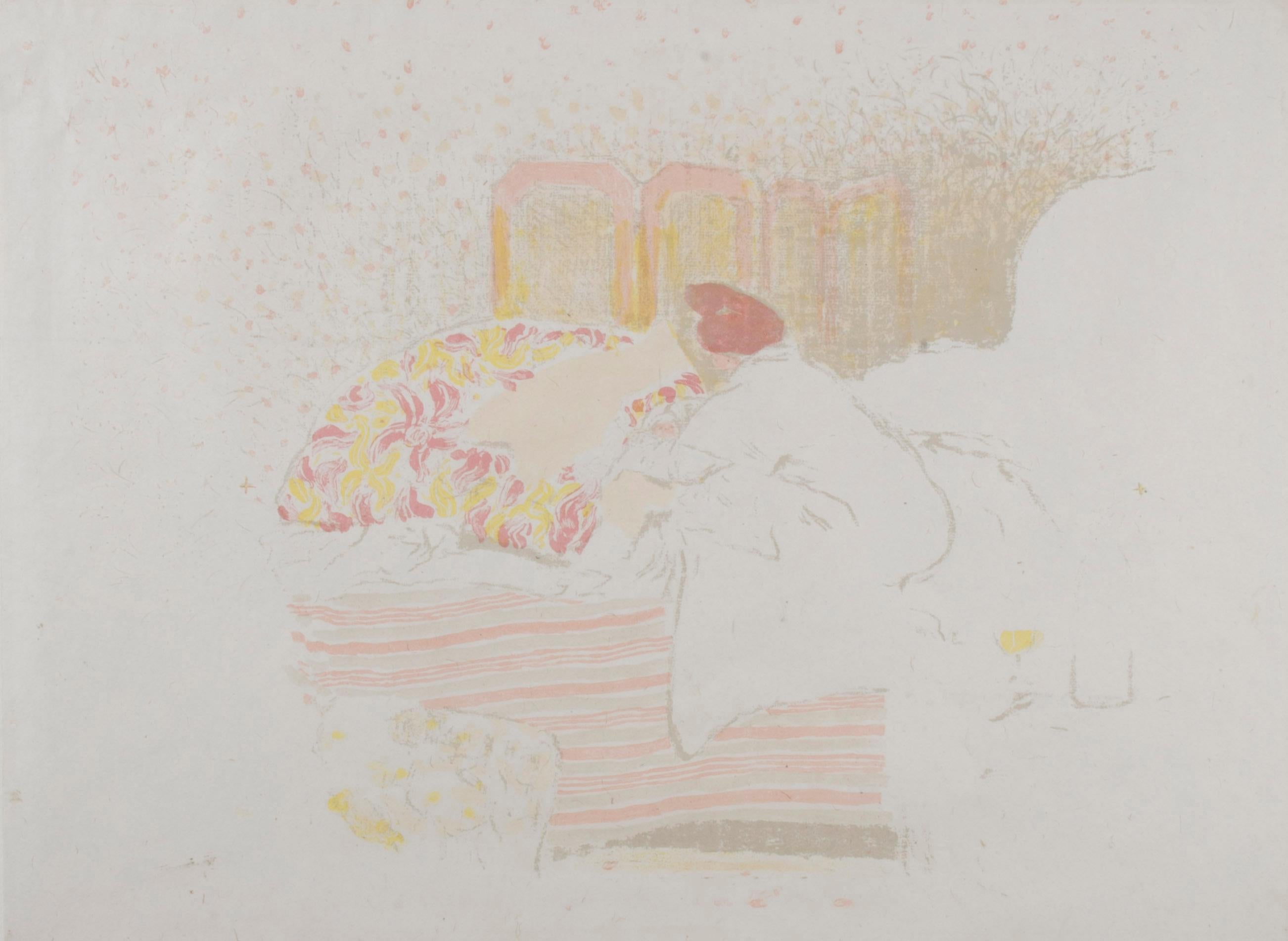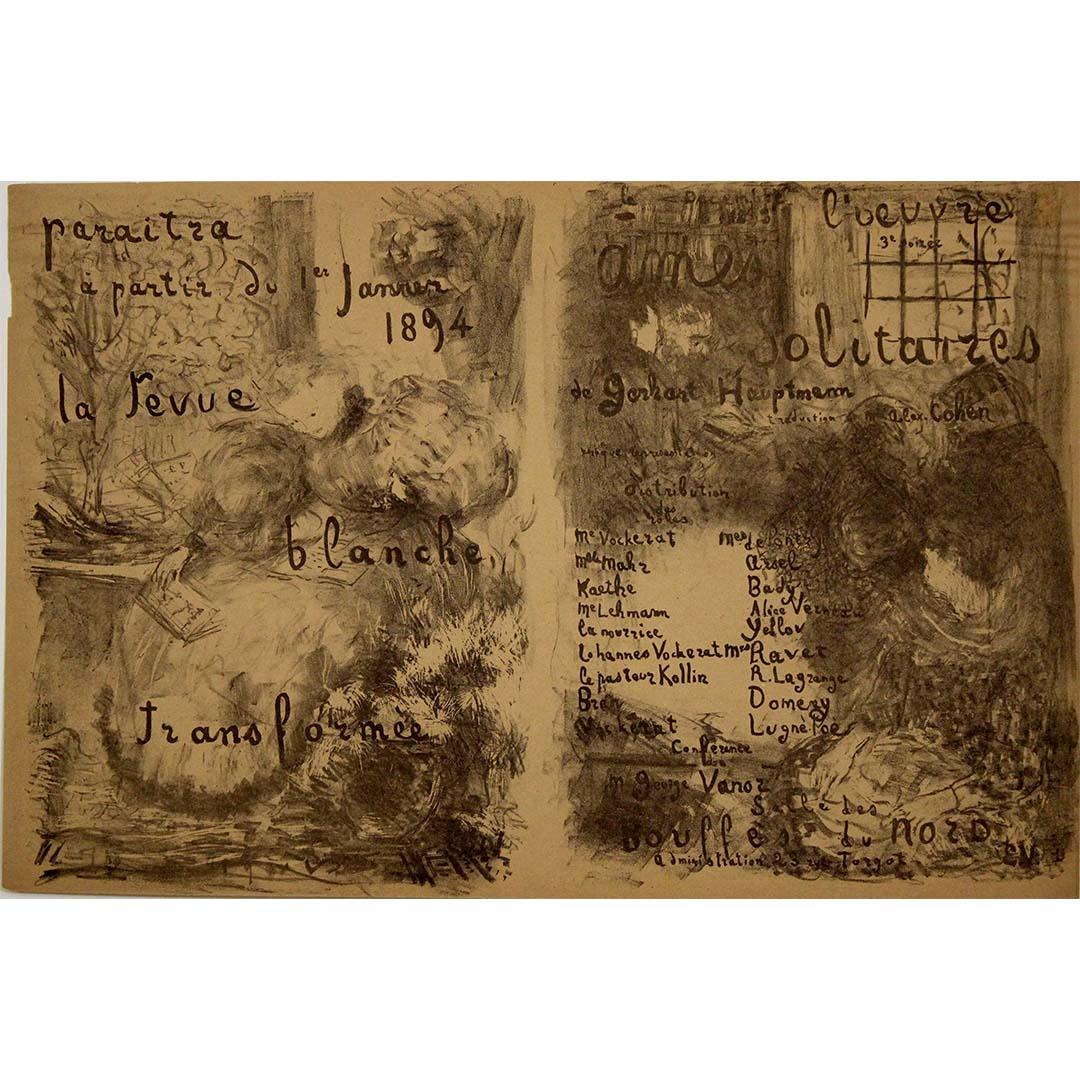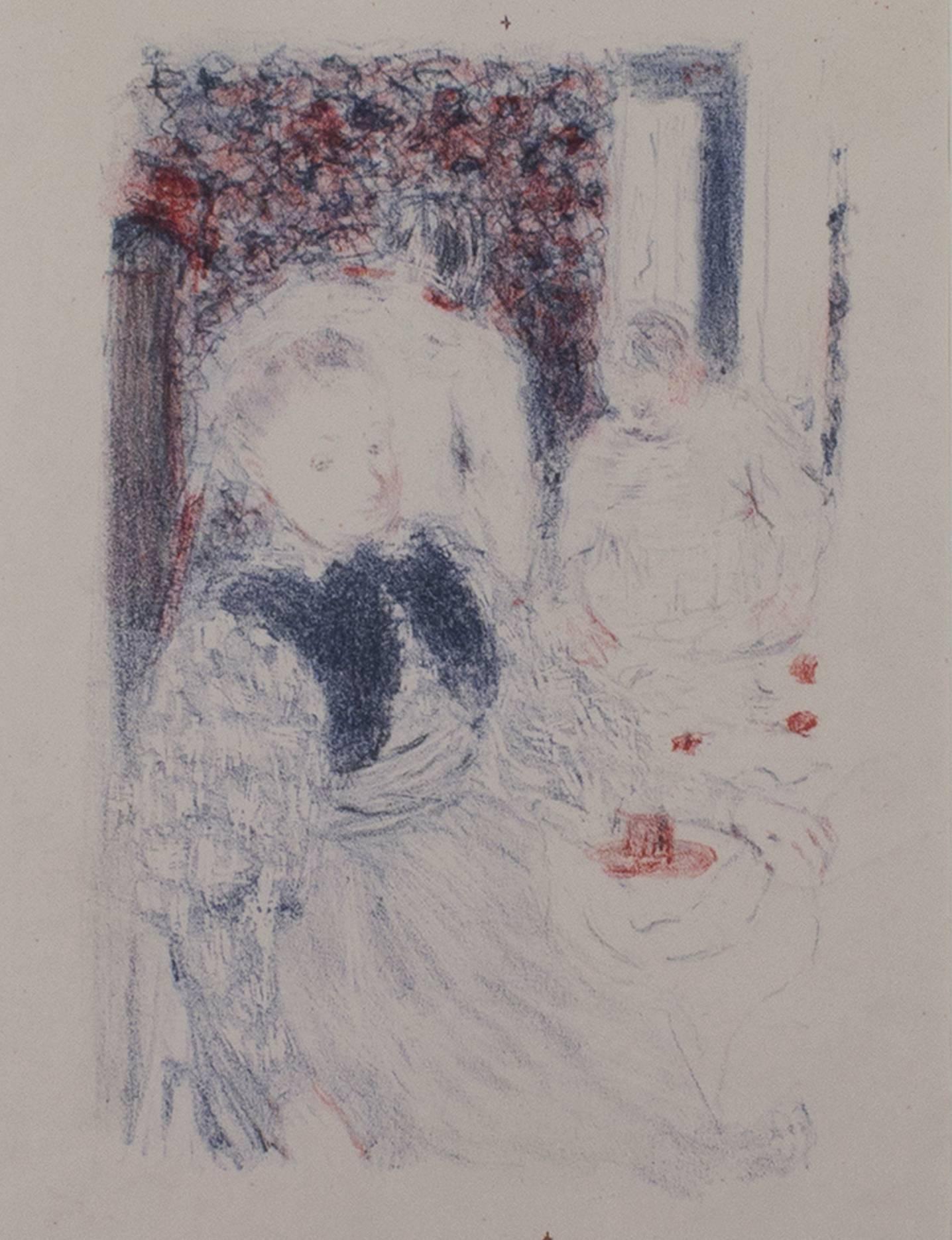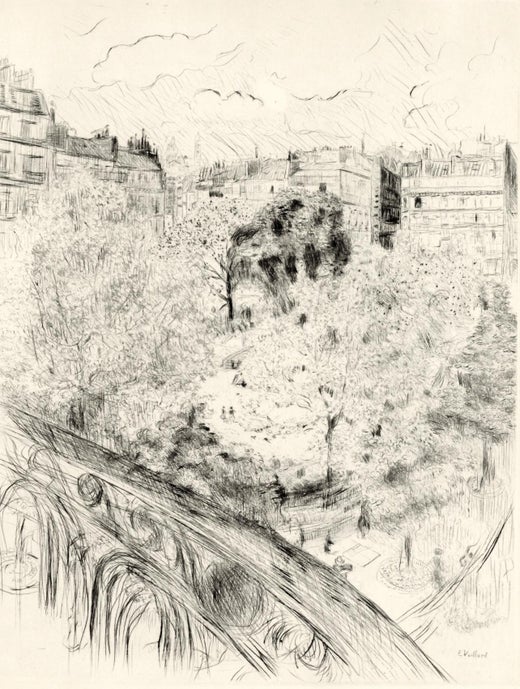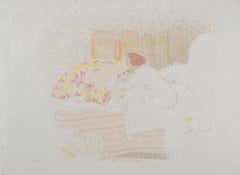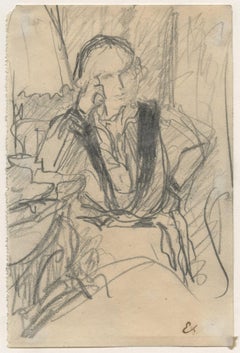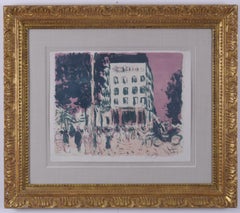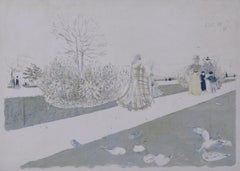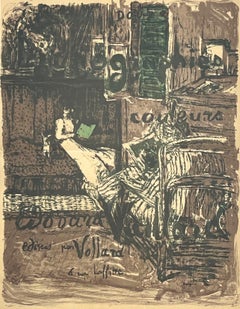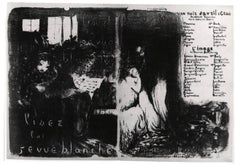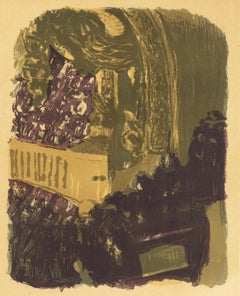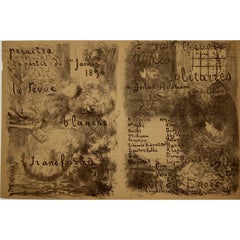Couverture pour Douze Lithographies en Couleurs, ou Passage et Interieurs
Color lithograph, 1896-1898
Unsigned (as issued)
From: Douze Lithographies en Couleurs, ou Passage et Interieurs
Printed by Auguste Clot, Paris
Printed on China paper
Published by Ambrose Vollard, 1899
Edition: 100
Condition: Printed on chine Volant paper. Very fresh and unfaded colors. One soft fold and a few spots of staining. Otherwise very good original untouched condition.
Image size: 20 1/4 x 15 3/4 inches
Sheet size: 22 3/4 x 18 inches
Reference: Roger Marx 31
Johnson Vollard catlog 155
Edouard Vuillard
French, 1868 - 1940
Vuillard's work straddles two centuries: he was a major post-impressionist in the 1890s, as well as a participant in the renewal of decorative art before and after 1900. Vuillard was one of the central figures of "Les Nabis" ("Nabi" means "prophet" in Arabic and Hebrew), a group of Parisian avant-garde artists whose members included Pierre Bonnard and Félix Vallotton, among others. During the Nabi period Vuillard produced some of his best-known work--provocative paintings of middle-class interiors and contributions to avant-garde theater.
Vuillard also worked steadily through his post-Nabi years, from 1900 until his death in 1940. He experimented increasingly with abstraction and powerful color in a manner that bears comparison with Henri Matisse and the Fauves. In the latter decades of his life he expanded his range in natural light, landscape, and portraiture.
Courtesy: National Gallery of Art, Washington, D.C.
HENRI MARIE PETIET (Saint-Prix, Seine-et-Oise, 1894-1980), publisher, bookseller and dealer in prints and drawings, Paris. Prints.
“All those who frequented the Hôtel Drouot before 1980 have preserved the memory of Henri Petiet. Because the man did not go unnoticed. He had an imposing appearance, a haughty bearing, a sharp verb – although he did not disdain a certain causticity in his remarks. Those who don't know him well thought he was gruff. Those who knew him well said he was sensitive. Both were right: he hid his sensitivity under his gruff exterior. » This is how Duret-Robert's article begins, sketching in 1991 a very interesting portrait of this print lover who was not a dealer like the others. The great collector of prints, Lessing Rosenwald, adds on page 82 of his Recollections of a collector : “Henri Petiet is an aristocrat, at least in speech and appearance (I have heard that he is actually a baron but has never used the title, so far as I know). »
Petiet came from a well-known family. His ancestor, Claude Petiet (1749-1806), Minister of War of the Directory, had signed the letter of appointment of Napoleon Bonaparte to command the army of Italy; his grandfather, Jules Petiet (1813-1871), a brilliant engineer, had participated on a technical level in the creation of the Northern railway and it was he who instilled a passion for railways in his grandson. His father, Marie-André Petiet (1853-1903), passed on to him a taste for books.
Henri Marie Petiet's first collection was made up of original editions and illustrated books, and when he decided to part with it in 1927, it took five vacations at the Hôtel Drouot to disperse it. Trained in bibliophily with Henri Beraldi (1849-1931), Petiet maintained a taste for beautiful books throughout his life.
From 1915 to 1920, Petiet worked in Ariès in the automobile factory created by his brother Charles, “Baron Petiet”. His knowledge of automobile history allowed him to bring together more than three hundred vintage cars. His curiosity did not stop there, as demonstrated by his passion for tennis and for music, that of Wagner in particular, but it was his passion for prints that trumped everything.
Petiet was a merchant, more for buying than for selling. Very quickly he built up an impressive stock of prints. Initially established at 11 rue d'Assas, it changed address towards the end of 1933, and moved to 8, rue de Touron. His store's sign "À la Belle Épreuve" is inspired by Philippe Burty's 1875 book L'Eau-forte , the preface of which itself is entitled La Belle Épreuve .
It is interesting to relate here the memory of the collector Lessing Julius Rosenwald (1891-1979) to whom Petiet sent from time to time a series of prints, as he tells us in his memoirs, sending with the following instructions: choose those that you wish to acquire and keep the others until my next visit.
When Petiet decided to close his gallery on rue de Tournon in 1952, he transferred part of his collections to his apartment, the shambles of which Rosenwald well described: “It seemed that there was a conflict whose The issue was to know which of Petiet or his collections would occupy the place. Every square centimeter of parquet floor was occupied firstly by prints, secondly by model locomotives, thirdly by postcards depicting old cars, and fourthly only by the furniture strictly necessary for existence. , with narrow paths to move around... » Which did not prevent Rosenwald from admiring it: « How Petiet ever found anything will, I think be a mystery that he will carry to his grave. But find things he did, and when he did he always had some bit of interesting information concerning each particular item. » And Rosenwald continues: “It is because of Petiet that I have such a large and fine collection of Daumier lithographs and bronzes. He was also the source of many prints of the Impressionists and Post-impressionists. Likewise it was Petiet who secured me Gabriel St. Aubin prints from Monsieur Thomas and a series of color prints from Monsieur Adhémar of the Bibliothèque Nationale. They were extremely important acquisitions, and I doubt that anyone other than Petiet could have procured them. Indeed, I have invariably found him to be an excellent guide for prints in his field. »
The key to his success as a print dealer and collector perhaps lay in the advice he once gave to one of his friends: “Keep an inquisitive mind and you will always stay young”.
His library was sold on June 10, 1992 in Paris, at Piasa, with two prefaces, by H. Dufresne and Cl. Guérin. His collection of model railways, formed both by himself and by his family, will follow on November 25, 2004, in Paris, also at Piasa, with an introduction by the expert Lamming and a text by H . Dufresne. His collection of photographs, postcards and railway documents was put up for auction the following day, November 26, 2004, again at Piasa.
The sales of his remarkable collection of prints were organized after his death by the auctioneer Piasa, assisted by experts Denise Rousseau and Jean-Claude Romand (1991-1997), then by Jean-Claude Romand and Arsène Bonafous-Murat (1997). -2005), with the help of Hélène Bonafous-Murat from 2003, then, between 2005 and 2009, by Jean-Claude Romand and Hélène Bonafous-Murat, and, finally, from December 2009, by Nicolas Romand and Hélène Bonafous-Murat.
The stamp, composed of the initials of Baron Henri Marie Petiet in an oval, was created after his death to mark the reverse of the prints in his collection as they were put on public sale.
Finally, Christine Oddo wrote an important biography of Petiet, published by Éditions des Cendres in 2017. For any additional information on Petiet, his career and his multiple contacts, we refer our readers to this work. Let us specify here that Petiet was the author of a “Study on the engraved work of Pablo Picasso” which was not published, but which can now be found as an appendix to this book (pp. 275-284 ). In another appendix we can find the list of all the sales concerning the different parts of his collection, from the year 1991 and until the last sale organized by Ader Nordmann at the Opéra Comique in Paris, the 25 and November 26, 2017 (pp. 285-288).
For his dry stamp on the prints published by him, see L.2021a, and for another stamp affixed from autumn 2018 by the heirs on unsigned Picasso prints, coming from the Petiet collection, see L .5462.
Courtesy Lugt
